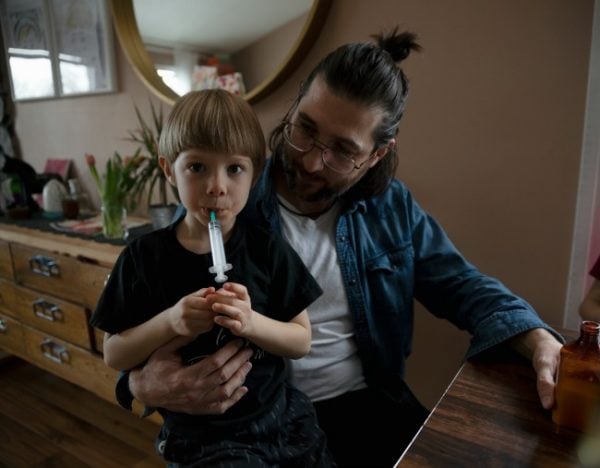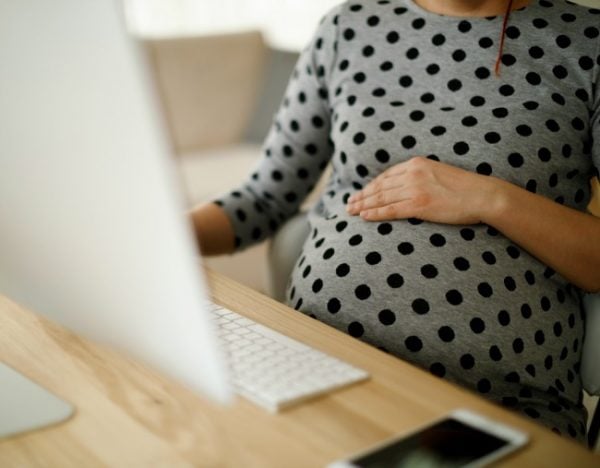
Someone from my mothers’ group told me a story about a friend of hers who went back to work after maternity leave.
Her friend worked in the public service, and her department had moved floors while she was on leave. When she returned, she discovered – as she stood around awkwardly among her colleagues’ desks – a space hadn’t been reserved for her in the new office configuration. So her manager offered a solution: how about she sit in the team’s previous location, on the other floor?
All set for her first day back, wearing her smart new work clothes bought especially for the occasion, she took the lift up to the old office. The lift doors opened, and the lights flickered on to reveal the unmistakably desolate scene of an abandoned commercial space: a cityscape of old ring-binders stacked in higgledy-piggledy towers, desk chairs poised at strange inclines scattered about like artefacts from a ruined civilisation, and a forgotten mug, chipped, with a now-permanent tea stain, left behind on the one remaining desk. She was the only person there.
Maybe this story is apocryphal, but that’s how mothers talk about returning to work after children. Cautionary tales are passed around like folklore.
There’s the woman, working part-time, who was told her desk by the window had been given to a full-time employee, since the view was “going to waste” for the two days a week she wasn’t there. There are the stories of day-care centres which only ever call up the mother when a child is sick, even though they have both parents’ phone numbers on file. There are the women overlooked for promotions while on maternity leave, or because of their part-time hours, who watch their junior staff members leap-frog them to become their boss. And there’s this graph from a Danish study, passed around in Facebook mothers’ groups like the world’s most depressing meme.




Top Comments
If men do take up parental leave or take carers leave or ask for more flexible hours because of school hours etc, are they penalised in the same way women are? I would be interested to see any research. I’d cautiously posit they’re not, but rather get kudos for being family focused. I had a male boss who prioritised his hours for family time, it didn’t seem to do him any harm. Everyone just accepted it. If so, this seems like a win-win solution, easily implemented, for everybody - the dads just need to get on board - that’s the challenge.
In my industry (healthcare), they would be professionally disadvantaged in the same way, though perhaps also effusively socially praised for being so "selfless" as to look after their own children.
It's a bit of a provocative thought, but I've always believed that more men would actively avoid fatherhood altogether if they were expected to give up even a fraction of of what most women automatically sacrifice when they become Mums. In general, much of the mental and physical slog of parenthood is taken up by the female partner, particularly when the kids are smaller - I don't really see it as a role that many men would relish or actively seek to do more of, unless they were really keen on having children.
In my industry (IT) anyway who worked with those restrictions would be slowed in their career progression since your skills would deteriorate over time and having set hours that are off-limits means the tasks requiring urgent or immediate attention are so longer assigned to you.
I know of a couple cases of male friends who have taken extended paternity leave and who were later frozen out of their work (in legal profession) and made redundant for not meeting budget.
I know this is just anecdotal, but it certainly does happen.
I used to work in finance for some time, in companies that had parental leave available for both men and women. Unfortunately, yes, it did do most of those men 'harm'.
It seems that in some industries and/or companies, it's expected that work is prioritised first and anything less shows you aren't worth a promotion.
It’s not entirely accurate to say that men or women can take the government paid parental leave. The requirement is that is taken by the woman or adoptive parent. She can then ‘sign over’ her entitlement to her partner if she wants to go back to work. But for the partner to qualify for this transfer, the woman would first have had to qualify for it.
Long and short of it, he can take it, if she qualifies for it and signs it over to him.
In our family, this means that if our salary situations were reversed, we’d get it, but we don’t because the woman earns more.
We don’t need the payment, but the point is that this is not a policy that is designed to encourage men to take that large chunk of parental leave.
The ‘dad and partner pay’ isn’t means tested though. Go figure.